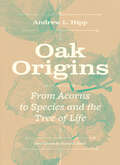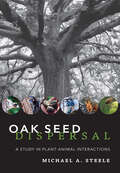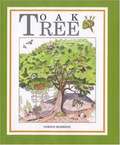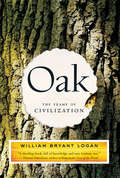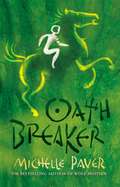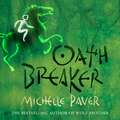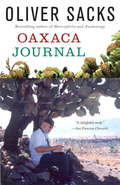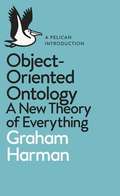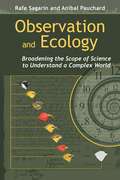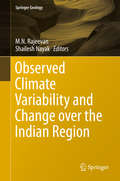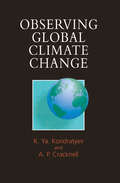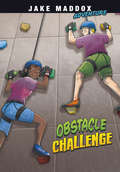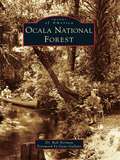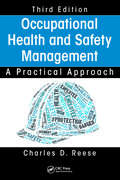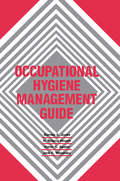- Table View
- List View
Oak Origins: From Acorns to Species and the Tree of Life
by Andrew L. HippFrom ancient acorns to future forests, the story of how oaks evolved and the many ways they shape our world. An oak begins its life with the precarious journey of a pollen grain, then an acorn, then a seedling. A mature tree may shed millions of acorns, but only a handful will grow. One oak may then live 100 years, 250 years, or even 13,000 years. But the long life of an individual is only a part of these trees’ story. With naturalist and leading researcher Andrew L. Hipp as our guide, Oak Origins takes us through a sweeping evolutionary history, stretching back to a population of trees that lived more than 50 million years ago. We travel to the ancient tropical Earth to see the ancestors of the oaks evolving side by side with the dinosaurs. We journey from the oaks’ childhood in the once-warm forests of the Arctic to the montane cloud forests of Mexico and the broad-leaved evergreen forests of Southeast Asia. We dive into current research on oak genomes to see how scientists study genes’ movement between species and how oaks evolve over generations—spanning tens of millions of years. Finally, we learn how oak evolutionary history shapes the forests we know today, and how it may even shape the forests of the future. Oaks are familiar to almost everyone, and beloved. They are embedded in our mythology. They have fed us, housed us, provided wood for our ships and wine barrels and homes and halls, planked our roads, and kept us warm. Every oak also has the potential to feed thousands of birds, squirrels, and mice and host countless insects, mosses, fungi, and lichens. But as Oak Origins makes clear, the story of the oaks’ evolution is not just the story of one important tree. It is the story of the Tree of Life, connecting all organisms that have ever lived on Earth, from oaks’ last common ancestor to us.
Oak Seed Dispersal: A Study in Plant-Animal Interactions
by Michael A. SteeleThe definitive examination of oak forest evolutionary ecology.Seed dispersal is a critical stage in the life cycle of most flowering plants. The process can have far-reaching effects on a species' biology, especially numerous aspects of its ecology and evolution. This is particularly the case for the oaks, in which the dispersal of the acorn is tied to numerous tree characteristics, as well as the behavior and ecology of the animals that feed on and move these seeds to their final destination. Forest structure, composition, and genetics often follow directly from the dispersal process—while also influencing it in turn. In Oak Seed Dispersal, Michael A. Steele draws on three decades of field research across the globe (e.g., the United States, Mexico, Central America, Europe, and China) to describe the interactions between oaks and their seed consumers. Rodents, birds, and insects, he writes, collectively influence the survival, movement, and germination of acorns, as well as the establishment of seedlings, often indicating a coevolutionary bond between oaks and their seed consumers. This bond can only be understood by unraveling the complex interactions that occur in the context of factors such as partial seed consumption due to acorn chemistry, scatterhoarding, predation of the seed consumers by other organisms, and the limiting effects of masting on insect, rodent, and jay damage.Offering new insights on how animal-mediated dispersal drives ecological and evolutionary processes in forest ecosystems, Oak Seed Dispersal also includes an overview of threatened oak forests across the globe and explains how a lack of acorn dispersal contributes to many important conservation challenges. Highly illustrated, the book includes photographs of key dispersal organisms and tactics, as well as a foreword by Stephen B. Vander Wall, a leading authority on food hoarding and animal-mediated seed dispersal, and beautiful artwork by Tad C. Theimer, also an accomplished ecologist.
Oak Tree
by Gordon MorrisonAs the oak tree blossoms, robins and squirrels begin to build their nests, bees fly in and out of their hive, and the tree comes to life. Not only is the oak a living thing itself, it is also a habitat for other living creatures that depend on it for nesting, food, and shelter. Readers follow the tree and its inhabitants through seasons of flowering, leafing and fruiting, the return to a deep winter sleep, and the springtime reawakening -- completing a cycle which has gone unbroken for more than one hundred years.
Oak and Ash and Thorn: The Ancient Woods and New Forests of Britain
by Peter FiennesA Guardian Best Nature Book of the Year The magic and mystery of the woods are embedded in culture, from ancient folklore to modern literature. They offer us refuge: a place to play, a place to think. They are the generous providers of timber and energy. They let us dream of other ways of living. Yet we now face a future where taking a walk in the woods is consigned to the tales we tell our children. Immersing himself in the beauty of woodland Britain, Peter Fiennes explores our long relationship with the woods and the sad and violent story of how so many have been lost. Just as we need them, our woods need us too. But who, if anyone, is looking out for them?
Oak: The Frame of Civilization
by William Bryant LoganThe ultimate distance race is within your reach--a completely updated edition of the now-classic work. Professional arborist and award-winning nature writer William Bryant Logan deftly relates the delightful history of the reciprocal relationship between humans and oak trees since time immemorial--a profound link that has almost been forgotten. From the ink of Bach's cantatas, to the first boat to reach the New World, to the wagon, the barrel, and the sword, oak trees have been a constant presence throughout our history. In fact, civilization prospered where oaks grew, and for centuries these supremely adaptable, generous trees have supported humankind in nearly every facet of life. "With an unabashed enthusiasm for his subject" (Carol Haggas, Booklist) Logan combines science, philosophy, spirituality, and history with a contagious curiosity about why the natural world works the way it does. At once humorous and reverent, "this splendid acknowledgment of a natural marvel" (Publishing News) reintroduces the oak tree so that we might see its vibrant presence throughout our history and our modern world.
Oasis: Modern Desert Homes Around the World
by iO Tillett WrightWelcome to the desert. Welcome home. This visually stunning tour of the world's most amazing desert homes will inspire &“desert vibes&” wherever you are. Creatives are drawn in by the extreme landscapes and limited resources of the desert; in fact, they&’re inspired by them, and the homes they&’ve built here prove it. From renovated Airstreams to sprawling, modern stucco, desert has become the new beachfront.In Oasis, artist iO Tillett Wright captures the best of this specific culture that emphasizes living simply, beautifully, and in connection with the earth. He highlights the homes that define this desert mindset, featuring the classics like Georgia O'Keefe's in Abiquiu, New Mexico, alongside more modern homes such as Michael Barnard&’s Solar House in Marfa, Texas. Casey Dunn&’s stunning photography will transport you to these relaxing refuges where you'll learn what elements create the balance of intentionality, ease, style, and function that these homes exude.
Oath Breaker: Book 5 (Chronicles of Ancient Darkness #5)
by Michelle PaverA boy. A wolf. A legend for all time. The fifth book in the internationally bestselling WOLF BROTHER (Chronicles of Ancient Darkness) series by the renowned author Michelle Paver.When he was outcast, Torak was the hunted one. The following spring, he becomes the hunter when he swears to avenge the killing of one of his closest friends. To fulfil his oath he must brave the hidden valleys of the Deep Forest, where the clans have reverted to the savagery of an earlier time. Here, Torak finally learns why he is the Sprit Walker and discovers the true cost of revenge. Audio edition also available, read by Sir Ian McKellen.
Oath Breaker: Book 5 (Chronicles of Ancient Darkness #5)
by Michelle PaverA boy. A wolf. A legend for all time. The fifth book in the internationally bestselling WOLF BROTHER (Chronicles of Ancient Darkness) series by the renowned author Michelle Paver.When he was outcast, Torak was the hunted one. The following spring, he becomes the hunter when he swears to avenge the killing of one of his closest friends. To fulfil his oath he must brave the hidden valleys of the Deep Forest, where the clans have reverted to the savagery of an earlier time. Here, Torak finally learns why he is the Sprit Walker and discovers the true cost of revenge. Audio edition also available, read by Sir Ian McKellen.
Oath Breaker: Book 5 from the bestselling author of Wolf Brother (Chronicles of Ancient Darkness #5)
by Michelle PaverA boy. A wolf. A legend for all time. The fifth book in the internationally bestselling WOLF BROTHER (Chronicles of Ancient Darkness) series by the renowned author Michelle Paver. Audio edition read by Sir Ian McKellen.When he was outcast, Torak was the hunted one. The following spring, he becomes the hunter when he swears to avenge the killing of one of his closest friends.To fulfil his oath he must brave the hidden valleys of the Deep Forest, where the clans have reverted to the savagery of an earlier time. Here, Torak finally learns why he is the Sprit Walker and discovers the true cost of revenge.
Oaxaca Journal
by Oliver SacksFrom "the poet laureate of medicine" and national bestselling author of Awakenings comes a fascinating investigation of Southern Mexico that explores the origins of chocolate and mescal, pre-Columbian culture and hallucinogens, and the peculiar passions of botanists. "Light and fast-moving. . . . Among the botanical and anthropological observations, one catches glimpses of Sacks's inner life: his preoccupation with dualities, his nearly Victorian sense of modesty, his fascination with the world around him." —The New YorkerSince childhood, Oliver Sacks was fascinated by ferns: an ancient class of plants able to survive and adapt in many climates. Along with a delightful group of fellow fern aficionados—mathematicians, poets, artists, and assorted botanists and birders—he embarked on an exploration of Southern Mexico, a region that is also rich in human history and culture. Combining Sacks's enthusiasm for natural history and the richness of humanity with his sharp and observant eye for detail, Oaxaca Journal is a rare treat.
Obit
by Victoria ChangLos Angeles Times Book PrizePEN Voelcker AwardAnisfield-Wolf Book PrizeNew York Times 100 Notable BooksTime Magazine's 100 Must-Read BooksNPR's Best BooksNational Book Award in Poetry, LonglistNational Book Critics Circle, FinalistGriffin Poetry Prize, ShortlistFrank Sanchez Book AwardAfter her mother died, poet Victoria Chang refused to write elegies. Rather, she distilled her grief during a feverish two weeks by writing scores of poetic obituaries for all she lost in the world. These poems reinvent the form of newspaper obituary to both name what has died ('civility,' 'language,' 'the future,' 'Mother's blue dress') and the cultural impact of death on the living. Loss, and the love for the dead, becomes a conduit for self-expression. In this unflinching and lyrical book, Chang meets her grief and creates a powerful testament for the living.'Chang's new collection explores her father's illness and her mother's death, treating mortality as a constantly shifting enigma. A serene acceptance of grief' New York Times, "100 Notable Books of 2020"'Exceptional... Chang's poems expand and contract to create surprising geometries of language, vividly capturing the grief they explore' Publishers Weekly
Object-Oriented Ontology: A New Theory of Everything (Pelican Books)
by Graham HarmanWhat is reality, really?Are humans more special or important than the non-human objects we perceive?How does this change the way we understand the world?We humans tend to believe that things are only real in as much as we perceive them, an idea reinforced by modern philosophy, which privileges us as special, radically different in kind from all other objects. But as Graham Harman, one of the theory's leading exponents, shows, Object-Oriented Ontology rejects the idea of human specialness: the world, he states, is clearly not the world as manifest to humans. At the heart of this philosophy is the idea that objects - whether real, fictional, natural, artificial, human or non-human - are mutually autonomous. In this brilliant new introduction, Graham Harman lays out the history, ideas and impact of Object-Oriented Ontology, taking in everything from art and literature, politics and natural science along the way.Graham Harman is Distinguished Professor of Philosophy at SCI-Arc, Los Angeles. A key figure in the contemporary speculative realism movement in philosophy and for his development of the field of object-oriented ontology, he was named by Art Review magazine as one of the 100 most influential figures in international art.
Observation and Ecology: Broadening the Scope of Science to Understand a Complex World
by Rafe Sagarin Aníbal PauchardThe need to understand and address large-scale environmental problems that are difficult to study in controlled environments--issues ranging from climate change to overfishing to invasive species--is driving the field of ecology in new and important directions. Observation and Ecology documents that transformation, exploring how scientists and researchers are expanding their methodological toolbox to incorporate an array of new and reexamined observational approaches--from traditional ecological knowledge to animal-borne sensors to genomic and remote-sensing technologies--to track, study, and understand current environmental problems and their implications. The authors paint a clear picture of what observational approaches to ecology are and where they fit in the context of ecological science. They consider the full range of observational abilities we have available to us and explore the challenges and practical difficulties of using a primarily observational approach to achieve scientific understanding. They also show how observations can be a bridge from ecological science to education, environmental policy, and resource management. Observations in ecology can play a key role in understanding our changing planet and the consequences of human activities on ecological processes. This book will serve as an important resource for future scientists and conservation leaders who are seeking a more holistic and applicable approach to ecological science.
Observations on the Alewife, Pomolobus Pseudoharengus (University of Toronto Biological Series #6)
by Joseph J. GrahamThe major study in this investigation was one of growth and form, carried out to evaluate differences in growth rates and body proportions between landlocked Lake Ontario and the anadromous Atlantic alewives. Particular attention was also given to the nature of the annual mortality that is characteristic of P. pseudoharengus in Lake Ontario.
Observed Climate Variability and Change over the Indian Region
by M. N. Rajeevan Shailesh NayakThe objective of the book is to make a comprehensive documentation of the observed variability and change of the regional climate system over the Indian region using the past observed data. The book addresses all the important parameters of regional climate system so that a physically consistent view of the changes of the climate system is documented. The book contains 16 chapters written by the subject experts from different academic and research institutes in India. The book addresses all important components/parameters of the climate system, like rainfall, temperature, humidity, clouds, moisture, sea surface temperature and ocean heat content, sea level, glaciers and snow cover, tropical cyclones and monsoon depressions, extreme rainfall and rainstorms, heat waves and cold waves, meteorological droughts, aerosols, atmospheric aerosols, ozone and trace gases and atmospheric radiative fluxes. One chapter deals with the past monsoon using monsoon proxy data. The last chapter deals with the future climate change projections over the Indian region (rainfall and temperature) made using coupled climate models. Most of the analyses (especially on rainfall, temperature, extreme rainfall, sea surface temperature, meteorological droughts) are based on the data for a longer period of 110 years, 1901-2010. For some other parameters like moisture, clouds, heat waves and cold waves, atmospheric aerosols, ozone and trace gases and radiative fluxes, data of shorter period have been used. The articles documented inter-annual and decadal variability in addition to documenting long term trends of different parameters. The trends have been tested for statistical significance using standard techniques. It is expected that the present book will be an excellent reference material for researchers as well as for policy makers. These results will be useful in interpreting future climate change scenarios over the region being projected using coupled climate models. Further analysis of these results is required for attributing the observed variability and change to natural and anthropogenic activities.
Observing Global Climate Change
by Arthur P. Cracknell Kyrill Ya KondratyevThis collaborative book aims to offer a comprehensive introduction to global climate, the way it is currently changing, the role of earth, air and satellite observation and monitoring, and subsequent climate modelling. It focuses on the interaction between natural and anthropogenic human- made change factors. The book emphasizes the importance of capturing climatic data and the use of that data in computer-based climatic modelling.
Observing the Solar System
by Gerald NorthWritten by a well-known and experienced amateur astronomer, this is a practical primer for all aspiring observers of the planets and other Solar System objects. Whether you are a beginner or more advanced astronomer, you will find all you need in this book to help develop your knowledge and skills and move on to the next level of observing. This up-to-date, self-contained guide provides a detailed and wide-ranging background to Solar System astronomy, along with extensive practical advice and resources. Topics covered include: traditional visual observing techniques using telescopes and ancillary equipment; how to go about imaging astronomical bodies; how to conduct measurements and research of scientifically useful quality; the latest observing and imaging techniques. Whether your interests lie in observing aurorae, meteors, the Sun, the Moon, asteroids, comets, or any of the major planets, you will find all you need here to help you get started.
Obstacle Challenge (Jake Maddox Adventure)
by Jake MaddoxTanisha Carter can't believe her luck when she finds out her favorite extreme obstacle course challenge is coming to her town. She needs a partner to compete, so her video game pal, Derek, agrees to team up with her. Derek is big for his age, but strong, and Tanisha is sure their combination of speed and strength will make for a winning team. But when training reveals Tanisha's fear of heights, the pair realizes they have more than one obstacle to overcome in this extreme challenge.
Ocala National Forest (Images of America)
by Dr Rob Norman Gene GallantThe Ocala National Forest, founded on November 24, 1908, by Pres. Theodore Roosevelt, is the oldest national forest in the eastern continental United States. The forest is one of Central Florida's last remaining expanses of forested lands with magnificent palms, towering live oaks, and the largest sand pine scrub population in the world. The Ocala National Forest contains major springs, including Salt Springs, Silver Glen, Alexander, and Juniper Run. In addition to several wilderness areas for visitors seeking primitive conditions and solitude, the forest has visitor centers, nature trails, and a section of the Florida Trail. Images of America: Ocala National Forest is filled with fascinating stories and exciting facts on the history of the steamboats, logging, trails, movie sets (including The Yearling, based on the Pulitzer Prize-winning novel by Marjorie Kinnan Rawlings), Cracker cowboys, modern conservation efforts, and more.
Occasional Prose
by Mary MccarthyA series of essays encompassing McCarthy's long literary career. The essays deal with varied subject matter, such as politics, language, history and nature.
Occupational Health Guide to Violence in the Workplace (Occupational Safety And Health Guide Ser. #2)
by Thomas D. Schneid20 murders every week. 18,000 assaults in the same time. All on the job.Sharp increases in workplace violence continue to take an unfortunate toll on American business-and its employees, families and communities. Preventative measures may be well-intentioned, but pose troubling conflicts in themselves, pitting each employee's privacy vs. overall worker protection.A full-self evaluation of your business and its personnel may be the key to safeguard against workplace violence. Thomas D. Schneid's Occupational Health Guide to Violence in the Workplace provides the important guidelines for that careful, all-encompassing examination.Most books on workplace violence focus on psychological profiles. In a change of pace, Schneid examines the issue from a safety/health professional's viewpoint, taking all angles, legal issues, and potential ramifications into account. Chapters focus on not only in-house efforts to prevent violent incidents, but also government and legal standards directly or indirectly related to worker's rights and corporate liability.Make every effort to prevent workplace violence from hitting home: start with advice from the Occupational Health Guide to Violence in the Workplace
Occupational Health and Safety Management: A Practical Approach, Third Edition
by Charles D. ReeseReflecting changes in the current health and safety landscape, Occupational Health and Safety Management: A Practical Approach, Third Edition includes examples and tools to facilitate development and implementation of a safety and health management approach. This how-to book is not just an information providing text. It shows you how to write a program and identify hazards as well as involve workers and attain their cooperation. It emphasizes the need for better and more effective communication regarding safety and health.See What’s New in the Third Edition: Chapters on workers’ compensation, terrorism, and Lean safety/sustainability Additional coverage of flammable liquids and ventilation, accident reporting, and accident investigation New compliance requirements as well as expanded accident investigation, environmental, and risk analysis guidelines PowerPoint presentation slides for each chapter A complete and practical guide for the development and management of occupational safety and health programs in any industry setting, the book supplies a management blueprint that can be used for occupational safety and health in any organization, from the smallest to the largest, beginning to develop or wanting to improve its safety and health approach. It includes comprehensive guidelines for development of occupational health and safety programs to a variety of industries and is especially useful for start-up companies.The author takes a total management approach to the development of written programs, the identification of hazards, the mitigation of hazards by the use of common safety and health tools, the development of a safe workforce through communications, motivational techniques, involvement, and training. He addresses the tracking and acceptable risk from both safety and health hazards. He also discusses how to work with and within the OSHA compliance approach as well as how to deal with the OSHA regulations, workers’ compensation, terrorism, and Lean safety. As you understand and apply the guidelines in each chapter, you can put your company on the way toward building a successful and effective safety and health effort for its employers and employees.
Occupational Health and Workplace Monitoring at Chemical Agent Disposal Facilities
by National Research CouncilThe National Academies Press (NAP)--publisher for the National Academies--publishes more than 200 books a year offering the most authoritative views, definitive information, and groundbreaking recommendations on a wide range of topics in science, engineering, and health. Our books are unique in that they are authored by the nation's leading experts in every scientific field.
Occupational Hygiene Management Guide
by Shirley K. JonesApplicable worldwide, this valuable guide will enable you to develop, implement, and maintain the effective occupational health programs for your company needs. Authored by four experts responsible for environment, health, and safety at different General Electric businesses, it can help you avoid costly business as well as personal liabilities resulting from occupational health problems. This book describes the hazard recognition and control procedures essential to employee preventive health programs. Details the auditing and measurements process, and outlines the procedures necessary to monitor and ensure total effectiveness of your program, both immediate and long-term. A prime feature is the 1989-1990 TLVs (Threshold Limit Values) and BEIs (Biological Exposure Indices) published with permission of the American Conference of Governmental Industrial Hygienists.
